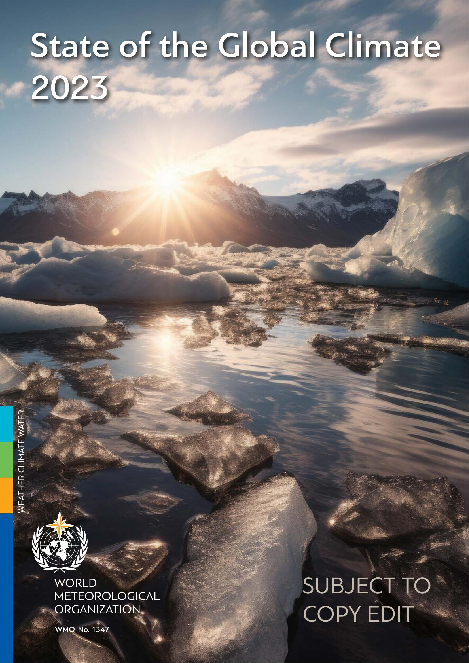 Read this article in French
Read this article in French- Share this article
- Subscribe to our newsletter
State of the Global Climate 2023
Records were once again broken, and in some cases smashed, for greenhouse gas levels, surface temperatures, ocean heat and acidification, sea level rise, Antarctic sea ice cover and glacier retreat, according to the State of the Global Climate 2023 report, published by the World Meteorological Organization (WMO) in March 2024.
Heatwaves, floods, droughts, wildfires and rapidly intensifying tropical cyclones caused misery and mayhem, upending everyday life for millions and inflicting many billions of dollars in economic losses.
The WMO report confirmed that 2023 was the warmest year on record, with the global average near-surface temperature at 1.45 °Celsius (with a margin of uncertainty of ± 0.12 °C) above the pre-industrial baseline. Also, 2023 ended the warmest ten-year period on record.
On an average day in 2023, nearly one third of the global ocean was gripped by a marine heatwave, harming vital ecosystems and food systems. Towards the end of 2023, over 90 per cent of the ocean had experienced heatwave conditions at some point during the year.
The global set of reference glaciers suffered the largest loss of ice on record (since 1950), driven by extreme melt in both western North America and Europe, according to preliminary data.
Antarctic sea ice extent was by far the lowest on record, with the maximum extent at the end of winter at 1 million km2 below the previous record year – equivalent to the size of France and Germany combined.
The number of people who are acutely food insecure world-wide has more than doubled, from 149 million people before the COVID-19 pandemic to 333 million people in 2023 (in 78 countries monitored by the World Food Programme). Weather and climate extremes may not be the root cause, but they are aggravating factors, according to the report.
Weather hazards continued to trigger displacement in 2023, showing how climate shocks undermine resilience and create new protection risks among the most vulnerable populations.
(WMO/ile)
Read more and download the report on the WMO website





Add a comment
Be the First to Comment